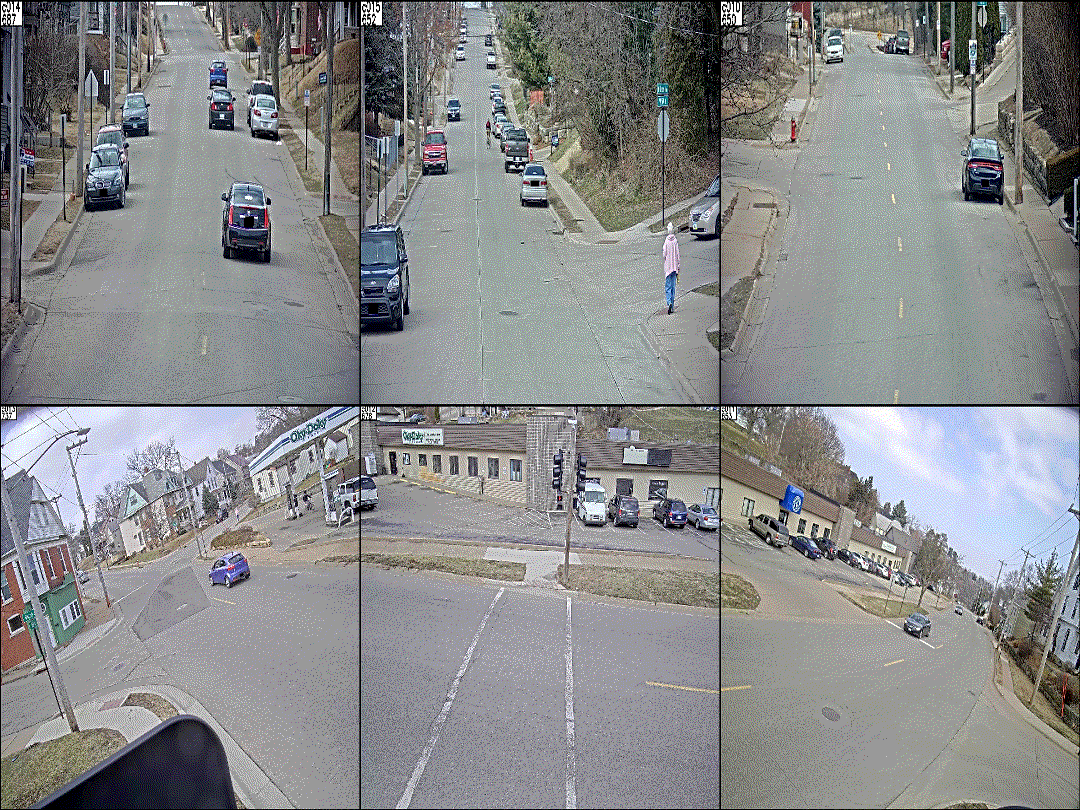This paper is devoted to explore Computer Vision video techniques to track cars across multiple cameras at a single intersection and multiple intersections spreading out in a mid-size city and find the best performing algorithm.
The dataset used is a subset of 3 sequences of the AI City dataset. This dataset offers 3.25 hours of videos showing road intersections and driving vehicles. 40 cameras were used in 10 different intersections. The dataset also offers the frame-by-frame bounding boxes of each vehicle, giving a total of 229,680 bounding boxes for 666 different vehicles.
In this repository we present TrackNet, a model capable of detecting and tracking cars across intersections in more than one camera. The model is based on a Faster R-CNN with ResNeXt101 backbone, Deep SORT with some refinements and Triplet Metric Learning with ResNet50 backbone for the object Re-ID.
The model pipeline is the following:
All the model justification and results are in the following slides: SLIDES
Or in the following paper: Paper
The first step of the model is to run a fine-tuned Faster R-CNN with ResNext101 backbone to predict the position of the cars frame-by-frame with their bounding boxes. We reach a top Average Precision of 0.9852 on the c010 of S03.
Once the cars are detected we tested several tracking algorithms (Max Overlap, SORT, Deep SORT) to track and relate the bounding boxes which are from the same car along the frames. The best performing technique was Deep SORT with an average IDF1 of 0.7447 over all the sequences.
Once all the cars have been assigned to a track along the same camera, TrackNet relates them to be able to identify the same car in different cameras.
To do so, the model uses a Triplet Network with ResNet50 as backbone to implement Deep Metric Learning computing features from every tracklet. Once each tracklet has an embedding the Re-ID model matches all the similar tracklets from different cameras ensuring a cross-match condition. TrackNet is able to achieve and average IDF1 of 0.4733.
This code is implemented in Python3.6+, Detectron2 and Pytorch
If you want to reproduce our results, please download the datasets from AI City Challenge 22 and put them in a folder called data outside the repository folder:
├── data
├── AICity_data
├── train
├── S01
├── S03
├── S04
├── tracknet
├── main.py
├── AICity.py
...
├── utilities
The user has the ability to select which training sequences (S01, S03...) want by switching the train_seq parameter of the AICity object in the main.py file. The pipeline creates a data folder inside the root folder in which all the predictions are stored divided in different folders depending on the training sequences. Furthermore, the user has the ability of running just some parts of the pipeline just by commenting the corresponding lines of the main.py file.
So to run TrackNet run:
$ python main.py
@article{2022tracknet,
title={TrackNet: A Triplet metric-based method for Multi-Target Multi-Camera Vehicle Tracking},
author={Serrano, David and Net, Francesc and Rodr{\'\i}guez, Juan Antonio and Ugarte, Igor},
journal={arXiv preprint arXiv:2205.13857},
year={2022}
}


